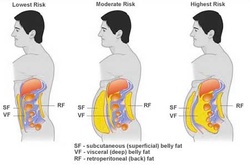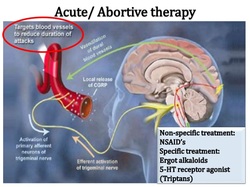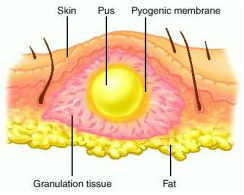- Empty Cart
|
Browse or search a few examples - of
symptoms, activities, health effects related to personal care, food, drugs or other environmental exposures.
Comments
 An edible mollusk of warm seas that has a shallow ear-shaped shell lined with beautiful mother-of-pearl and pierced with a line of respiratory holes along the outer edge. Also called ear shell. Belongs to the the large class Gastropoda including snails, slugs, or whelks; clade Vetietigastropoda (sea snails), genus Haliotis, family Haliotidae. Abalone has a delicious flavor but must be carefully tenderized. The taste of is similar to scallops and could be completely non-fishy. Varieties include Fresh California red abalone, the smaller green, pink, and black abalone and Australian Abalone (Haliotis Rubra). Abalone is believed to prevent arthritis, promote healthy eyes, alleviate colds, reduce fluid retention and improve circulation.  Exercises affecting the muscles in the front of the abdomen (belly). also called abdominal or stomach muscles, ab and abs. Abdominal muscles, together with muscles in the back, make up 'core' muscles, supporting the trunk, keeping body stable and balanced, protecting the spine, assisting in the regular breathing movement and keeping abdominal organs such as the intestines in place. These muscles tend to weaken with age unless specifically exercised. Strong back and abdominal muscles can help heal most types of back pain, enhance balance, improve posture, reduce scoliosis symptoms, help prevent falls and injuries during sports or other activities. Causes of abdominal muscle strains include overstretching, overuse or a violent, poorly performed movement of the trunk.  fat around waistline, also called belly fat, estimated as excessive if circumference around the waist is greater than 40 inches (102 cm) in men and 35 inches (88 cm) in women. Increased subcutaneous (superficial) could be actually protective, while increased visceral fat - the kind that surrounds organs and puffs the stomach into a "beer gut" - is associated with metabolic dysfunction. There are six types of abdominal visceral fat: perirenal, gonadal, epicardial, retroperitoneal, omental and mesenteric.  physical discomfort, unpleasant sensation, mild ache, crampy, achy, dull, intermittent or sharp pain in the abdomen, below the ribs and above the pelvis. Abdominal pain is also called a stomach pain, gut ache, belly pain, tummy ache, collywobbles, stomachache, and bellyache. It can be widespread or localized to one area of the abdomen. Causes depend on the type of pain, its exact location, how it began, the triggers, the relievers and other accompanying symptoms.  fruit of Abiyuch tree, Crateva religiosa, also called the sacred garlic pear (raw garlic pear) and temple plant. Can be pickled and used as a condiment. The seeds resemble the seeds of an orange. They are enclosed in a gelatinous pulp which is sweet and good to eat. In Ayurveda medicine, bark is used for urinary complaints such as kidney, bladder stone, fever and to relieve vomiting. For bruises, fresh leaves are ground with a little vinegar or lime water/hot water and applied to the skin as paste for 10 to 20 minutes. Leaves can be also applied to soles of feet to relive swelling and burning sensation.  Treatments are often divided into two types: abortive and profylactic. The former addresses a medical condition in progress and the latter prevents its occurence. Abortive therapy relieves symptoms of a disorder, preventing it from getting worse, and intends to stop a medical condition from progressing any further. A group of drugs called triptans are usually preferred for abortive treatment of headaches. They should be taken as soon as possible during the typical migraine attack. The most common prophylactic therapies for headaches include antidepressants, beta blockers, calcium channel blockers and anti-seizure medications. Cluster headaches may also be treated with ergotamine and sumatriptan, as well as by inhaling pure oxygen. The goal of abortive therapy for cluster headache is fast, effective and consistent relief. Because a cluster headache is relatively short in duration, the abortives should work within 10-15 minutes to be considered adequate therapy.  Swelling containing pus - a thick whitish-yellowish, yellow brown or greenish opaque liquid consisting of dead white blood cells and bacteria with tissue debris and serum. Staphylococcus aureus and Streptococcus pyogenes are more likely to be 'pus-forming' as they produce toxins that can damage the body's tissues. Most abscesses form just under the skin or gums. Skin abscesses often occur in healthy individuals, but recurring abscesses may indicate diabetes or a weakened immune system. An abscess inside the body usually happens because of a medical condition like Infection in the liver.  dark-purple grape-like tropical fruit native to Central and South America. High in antioxidants and vitamins. Acai berry contains many polyphenolic anthocyanin compounds like resveratrol, cyanidin-3-galactoside, ferulic acid, delphinidin, petunidin as well as astringent pro-anthocyanidin tannins like epicatechin, protocatechuic acidand ellagic acid. Acai berry is also rich in medium chain fatty acids like oleic acid (omega-9) and linoleic acid (omega-6), and minerals like potassium, calcium, magnesium and zinc. People use acai berries for osteoarthritis, high cholesterol, erectile dysfunction (ED), weight loss and obesity, “detoxification,” and for improving general health. Overeating acai berries might result in tiredness and yeast overgrowth.  free-living ameba (microscopic unicellular eukaryotic, organisms) most common in soil and water, that can cause rare, but severe infections of the eye, skin, and central nervous system. It can enter the eyes through contact lens use, cuts, or skin wounds or by being inhaled into the lungs. The three diseases caused by Acanthamoeba are: Acanthamoeba keratitis – An infection of the eye that typically occurs in healthy persons and can result in permanent visual impairment or blindness. Granulomatous Amebic Encephalitis (GAE) – A serious infection of the brain and spinal cord that typically occurs in persons with a compromised immune system. Disseminated infection – An infection where the germ enters the body through a single entry point (a cut, wound, or through the nostrils) and then disperses throughout the body. This widespread infection that can affect the skin, sinuses, lungs, and other organs independently or in combination. It is also more common in persons with a compromised immune system. |
Categories
All
|